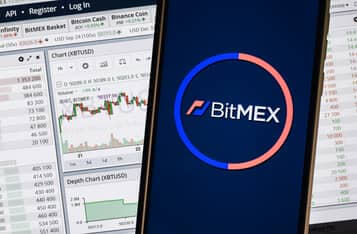Donald Trump’s Vision for U.S. Bitcoin (BTC) Mining Dominance
In a bold proclamation that has sent ripples through both the cryptocurrency and energy sectors, former President Donald Trump recently suggested that all remaining Bitcoin (BTC) should be mined on U.S. soil. While this goal is technically unattainable due to the decentralized nature of Bitcoin mining, it raises questions about America’s potential to dominate this burgeoning industry. As of 2024, the U.S. accounts for approximately 37.8% of global Bitcoin mining, according to the Cambridge Bitcoin Electricity Consumption Index. Could the U.S. push this figure above 90%?
This ambitious goal, while challenging, could reshape America’s technological and economic landscape in profound ways. Importantly, the thriving of the American Bitcoin Mining Industry should be a bipartisan objective. Whether you lean left or right, the potential for job creation, energy innovation, and technological leadership makes this a topic that should matter deeply to both Democrats and Republicans alike.
Transforming America’s Energy Wealth
The United States is blessed with an abundance of natural resources ideal for energy production. It boasts 48.3 billion barrels of proven oil reserves and 691 trillion cubic feet of natural gas, reflecting significant increases from previous years. Additionally, the U.S. has vast potential for solar, wind, and uranium for nuclear power. However, it’s crucial to not forget that China is making significant investments to become abundant in energy. According to the U.S. Energy Information Administration, China’s total energy production reached 141.7 quadrillion British thermal units (Btu) in 2021, compared to the U.S.’s 95.7 quadrillion Btu.
While the U.S. still leads in per capita energy production, China’s rapid growth and massive investments in this sector underscore the urgent need for a strategic reassessment of energy and technological policies to maintain a competitive edge. Energy is at the core of the reshoring plans proposed by both the Biden and Trump administrations, and naturally, the cheaper and more robust the energy infrastructure, the better positioned American Bitcoin miners will be in the global market.
Beyond energy considerations, Bitcoin mining is emerging as a powerful force for economic revitalization of rural areas hit hard by globalization and the offshoring of American industry. According to CoinShares, in 2023, U.S. Bitcoin mining operations generated $2 billion in revenue, a figure that represents 3% of the American iron and steel industry’s output. This comparison underscores the growing economic significance of this nascent sector. In just five years, the industry has created substantial employment opportunities. According to internal estimates, direct employment in U.S. Bitcoin mining has grown to approximately 1,700 jobs, doubling over the past two years. When considering indirect employment, PwC estimates the figure rises to around 11,000 jobs nationwide.
Neo-Keynesian Interventionism
A more realistic strategy is the state intervention approach. This method, implementable within a single presidential term, would involve recognizing Bitcoin as a strategic asset aligned with U.S. interests. Key policy changes could include eliminating capital gains tax on Bitcoin transactions (currently at 20% for long-term holdings) and mining equity, offering tax efficient loan facilities to miners, and abolishing the 21% corporate income tax rate for mining operations.
Designating Bitcoin mining as critical national infrastructure could transform the American approach to grid management. Bitcoin miners, with their ability to rapidly adjust power consumption, can act as a dynamic buffer for the electrical grid. During peak demand periods, miners can swiftly reduce their operations, redirecting power to essential services. This flexibility is particularly valuable as the U.S. integrates more intermittent renewable energy sources like wind and solar.
By offering tax incentives for participation in grid stabilization, it can become economically attractive for miners to operate in the U.S. while simultaneously enhancing the grid’s resilience. The Department of Energy estimates that data centers, including cryptocurrency mining operations, could provide up to 2 gigawatts of demand response capacity by 2030. This strategy creates a win-win scenario: grid operators gain a powerful tool for network management, while miners receive economic benefits that could boost U.S. competitiveness in global Bitcoin production.
Laissez-faire Bitcoin
The third strategy is the free market approach. While slower to implement, potentially taking decades to fully materialize, this method could have far-reaching positive effects on American prosperity. This approach centers on recognizing the free choice of money as a fundamental right and involves massive deregulation of the power generation industry, removal of energy policy barriers, and elimination of manufacturing obstacles.
Consider that the average industrial electricity rate in the U.S. is currently 7.74 cents per kilowatt-hour (as of March 2024). By removing regulatory barriers and fostering competition, this cost could potentially be driven down significantly, making U.S.-based mining operations far more profitable than their global counterparts.
Additionally, this approach would advocate for significant reductions in capital gains, income, and corporate taxes. The current combined federal and state corporate tax rate in the U.S. averages 25.1%. A substantial reduction could unleash a wave of investment and innovation in the Bitcoin mining sector.
Crossroads
The United States stands at a digital crossroads. While 100% Bitcoin mining dominance is a lofty goal, the pursuit itself offers a golden ticket to national renewal. Imagine revitalized rural areas humming with high-tech activity, America leading the world’s first truly digital commodity (after oil and natural gas), and an energy revolution fueling a new era of industrialization.
This isn’t just about Bitcoin; it’s about mining the foundations of 21st-century economic power. By reshoring critical supply chains, from chips to ASIC miners, the U.S. isn’t just creating jobs — it's securing technological independence.
The potential economic benefits are substantial. Projections suggest that if the U.S. can capture 90% of the global Bitcoin mining market by 2028, it could contribute $30.6 billion to GDP — representing 1.2% of the projected U.S. GDP. This includes both the direct impact of $10.2 billion in Bitcoin mining revenue and an estimated $20.4 billion in indirect economic activity. Additionally, the industry could support over 54,000 total jobs nationwide.
The choice is clear: watch from the sidelines, or lead the charge. Whether through government intervention or free-market innovation, the path America chooses will shape its energy future, technological leadership, economic destiny, and global dominance. In the race for digital supremacy, Bitcoin mining isn’t just an economic opportunity. It’s a strategic imperative.
Source: CoinShares






